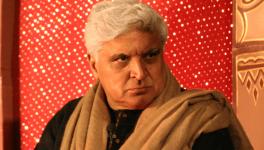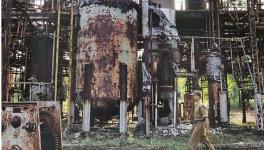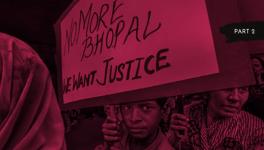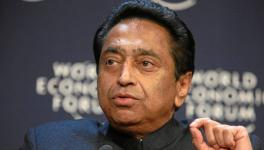Munawar Faruqui’s Case Questions India’s Liberal Credentials
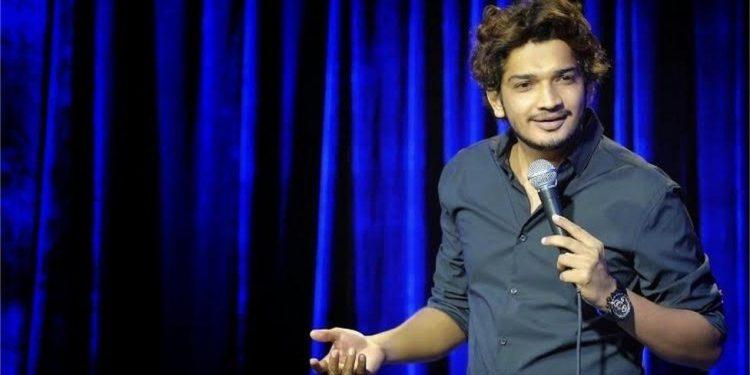
Image credit: The Leaflet
The recent tweet by Munawar Faruqui, a stand-up comedian, stating that inter alia, “Hate has won, artist has lost” is an egregious setback for the cause of free speech in India. That 12 of Faruqui’s shows during the past 12 months have been called off due to threats and the fear of violence from right wing saffron forces explains the immediate context as well as the anguish behind his tweet.
The tweet demonstrates the systematic culmination of a punishing process which started with the Madhya Pradesh (MP) police booking Faruqui under Section 295A of the Indian Penal Code (IPC) in January this year. Section 295A, a colonial era law, criminalizes deliberate and malicious speech aimed at outraging religious beliefs. It was alleged by the MP police, inter alia, that Faruqui, by his jokes, has hurt the religious sentiment of a particular religious community.
Faruqui’s case, besides making him the latest entrant in that long list of artists and writer who have been slapped with section 295A because of their non-conformism, also underlines, yet again, the illiberal and anti-democratic spirit of this law.
Blasphemy law – a sui generis implicit Indian version
In India, though, section 295A doesn’t explicitly mention the term blasphemy, or for that matter, any other statute. But, the facts of the cases in which it is invoked and a quick survey of the people against whom this section has been used, alludes to what this law is about.
Blasphemy, in ordinary usage, is a contemptuous or irreverent utterance concerning the Deity. Explaining why the word ‘blasphemy’ was not used in the Constitution or the law, lawyer and constitutional law scholar Gautam Bhatia explains, ““blasphemy” is a term unfamiliar to the Indian legal and constitutional landscape, perhaps because the Indian judiciary has long emphasized the inclusive and plural nature of Hinduism, which makes a concept such as blasphemy incoherent.” Besides, the concept of blasphemy flies in the face of a liberal-democratic-secular tradition on which India’s constitutional setup is largely predicated. Also, how averse is the notion of blasphemy with modernity, could be gauged from the fact that both the U.S.A and the U.K. have long done away with their respective blasphemy laws.
The perceived claim of moral injury by the non-State actors belonging to the majority community emanated from section 295A recognizing acts outraging religious beliefs as a criminal offence. Once recognized, the non-State actors, in sheer disregard of law and judicial process, take it upon themselves to avenge the moral injury by resorting to violence against the blasphemer.
Often, section 295A (along with Section 153A of IPC) is euphemistically touted as a law to tackle the issue of ‘hate speech’, given that there is no other specific law in Indian to address it. Hate speech laws are mostly thought to be a mechanism to protect minorities and vulnerable groups. However, section 295A is actually doing the exact opposite of it.
This insidious paradox of Section 295A has been aptly encapsulated in the Calcutta High Court’s judgment in the case of Chandmal Chopra vs. State of West Bengal (1987). While dismissing the petitioner’s claim of proscribing the Quran on grounds of violating sections 153A and 295A, the high court observed that “the mischief sought to be curbed under Sections 153A and 295A of the Penal Code … would be aggravated and not controlled by pursuing the instant proceedings.”
Legalizing Moral Injury and enabling majoritarianism
California University Professor Saba Mahmood’s formulation of ‘moral injury’ in the essay Religious Reason and Secular Affect: An Incommensurable Divide? (2009), on the Danish Cartoon controversy wherein Prophet Muhammad was satirized by way of 12 cartoons, is quite instructive, inter alia, to understand the tension between free speech, blasphemy, and politics of identity.
Moral injury is defined as “lasting psychological … spiritual, behavioral, and social impact of perpetrating, failing to prevent, or bearing witness to acts that transgress deeply held moral beliefs and expectations”. Mahmood argues that, “The notion of moral injury I am describing no doubt entails a sense of violation, but this violation emanates not from the judgment that “the law” has been transgressed but from the perception that one’s being, grounded as it is in a relationship of dependency with the Prophet, has been shaken … This wound requires moral action, but its language is neither juridical nor that of street protest, because it does not belong to an economy of blame, accountability, and reparations.”
This interpretation of Section 295A is so wide that any and every speech can be brought within its contour. In sheer disregard, the qualifiers “deliberate and malicious” used in the section was neutralized, if not discarded altogether, by adding an unambiguous phrase “tendency to cause public disorder”.
One finds an alarming similarity in what Mahmood argues, and how things have panned out in most of the cases related to section 295A in India. For example, take Faruqui’s case. The perceived claim of moral injury by the non-State actors belonging to the majority community emanated from section 295A recognizing acts outraging religious beliefs as a criminal offence. Once recognized, the non-State actors, in sheer disregard of law and judicial process, take it upon themselves to avenge the moral injury by resorting to violence against the blasphemer. Hence, it won’t be wrong to argue that section 295A (as it recognizes moral injury, which consequently, provides pretext to the non-state actors to run amok) is both an enabler and facilitator not for the victim, but for the aggressors.
How section 295A is used as a tool to mobilize religious community owing to moral injury is another dark aspect of this law. Lawyer and scholar Siddharth Narrain in his essay Law, Language and Community Sentiment: Behind Hate Speech Doctrine in India (2017) argues that, “In a multifaith society [like India] with a history of communal riots, such claims of hurt sentiment… along with an implied threat of disruption of public order, act to create a major chilling effect on free speech.”
Echoing Narrain, on the Punjab government’ decision to amend blasphemy law to prevent desecration of religious text by making it more stringent, political scientist Pratap Bhanu Mehta in 2018 wrote that, “making religious sentiments the basis for law, is a recipe for competitive political mobilization and conflict, not of peace”.
Legislative history of section 295A – context and immediacy
In India, the 1920s is described as a period of competitive communalisms. The milieu, particularly the cow belt in North India and Punjab, was charged with the ugly binary of Shuddhi and Tabligh. These movements, inter alia, mainly pertained to the issue of religious conversion and re-conversion. Propaganda and canards were used as tools by bigots to show others’ religion in a bad light.
Against this background, in the late nineteenth–early twentieth century in Punjab, history professor Neeti Nair in her essay Beyond the ‘Communal’ 1920s: The Problem of Intention, Legislative Pragmatism, and the Making of Section 295A of the Indian Penal Code (2013) has argued that “each of the province’s major religious communities participated in religious offensive publications that increased hostilities between the communities”. This communal competitiveness took an ugly turn with the publication of a scurrilous pamphlet Rangeela Rasool (1924) written by one Mahashe Rajpal. Consequently, Muslims were incensed and viewed this pamphlet as highly blasphemous, and it stirred wide scale controversy in Punjab between Hindus and Muslim. Viewing the impending violence, Rampal was booked under section 153A for provoking enmity on ground of religion. Trial was initiated and went up to appeal.
The Ramji Lal Modi judgement promotes the principle of heckler’s veto. According to this principle, a speech can be suppressed by the government viewing possibility of violence (law and order problem) by the hecklers.
The petitioner in appeal argued, inter alia, that, “criticism or satire on a religious teacher is not within the purview of the [said] section.” Giving a somewhat strict interpretation to the law, and accepting the argument advanced by the petitioner, Justice Dalip Singh of the Lahore High Court acquitted Rampal. However, Justice Singh said that “a clause might well be added to Sect. 295 by which the publication of pamphlets published with the intention of wounding the religious feelings of any person or of insulting the religion of any person might be made criminal.”
An emergency legislation
The above development did not only highlight the inefficiency of section 153A in dealing with cases of blasphemy, as noted by Justice Singh in his judgment, but it also provides the background in which section 295A was legislated.
When the discussion on Section 295A was put on the table, the Home Member J. Crerar proposed the bill as a measure to make ‘a scurrilous attack upon religion as the substantive matter’ so that it was no longer necessary to have to prove that feelings of enmity or hatred between different classes had arisen out of the publication in question for it to come under the law. This proposal, however, faced severe criticism, particularly, from the likes of Lala Lajpath Rai and M.A. Jinnah. Rai requested an explanation or change in the language so that “bonafide criticism, historical research and all that leads to the interpretation of religious texts in such a way as to lead to progressive reform in social matters will not be affected”. While Jinnah, too, felt that the Select Committee to which the bill would be referred, should strive to protect those who are engaged in bonafide and honest criticism of a religion. It is due to these reasons the words (as qualifiers) ‘deliberate and malicious’ were inserted so that the section would be “both comprehensive and at the same time of not too wide in application”.
Post- independent India and Section 295A
The constitutional validity of section 295A of IPC was checked for the first time in Ramji Lal Modi vs State of Uttar Pradesh in 1957. In this case, the petitioner Modi’s magazine, dedicated to cow protection, published certain controversial articles which were alleged to hurt the religious sentiment of the Muslims. The Supreme Court, in the said case, in relation to Article 19(1)(a) of the Indian Constitution, observed that, the term “in the interest of public order in Article 19(2) of the constitution implies that the protection is not just to those acts which actually cause the occurrence of public disorder but also to those acts which have a tendency to cause public disorder even though no actual disorder results from the impugned action”.
This interpretation of Section 295A is so wide that any and every speech can be brought within its contour. In sheer disregard, the qualifiers “deliberate and malicious” used in the section was neutralized, if not discarded altogether, by adding an unambiguous phrase “tendency to cause public disorder”. This thereby made the law a potent tool of misuse.
The Ramji Lal Modi judgement, which is currently the law of land, is dangerously problematic on other counts too: First, it promotes the principle of heckler’s veto. According to this principle, a speech can be suppressed by the government viewing possibility of violence (law and order problem) by the hecklers. Secondly, it prevents even sober, temperate and decent publication, as the history of politics of book ban in India shows. Thirdly, it goes against a very important maxim of criminal law- nullapoena sine lege¸ which means that criminal laws be precisely defined because their certainty is of basic importance when a citizen’s liberty is at stake.
In sum, in Ramji Lal Modi, the court left the field open for the state to use the law mischievously because the spectre of tendency of public disorder is enough to bring Section 295A into motion. This parochial interpretation, however, simply frustrates the objective of free speech enshrined in the Constitution of India.
Commenting on the judiciary’s approach of privileging security over speech, Narrain in his essay Hate Speech, Hurt Sentiment, and the (Im) Possibility of Free Speech (2016) observes that, “The problem with this approach is that the threat of a disruption of public order trumps the promise of free speech, and in turn translates into the censorship of creative endeavour, artistic work, criticism of religion, challenge to social orthodoxy, and satire. This, in turn, has encouraged a “heckler’s veto,”… This becomes an extra-constitutional method to curb speech.”
Progressive judicial template, inspiration, and hope
Be that as it may, the things are not that gloomy actually. Unlike, and despite, the constricted principle laid down in Ramji Lal Modi, in later judgments, the Supreme Court has provided a fantastic speech expansive framework.
In Shreya Singhal (2015), the apex court, while declaring Section 66A of the Information Technology Act, 2000 unconstitutional, held that advocacy of repugnant or even revolutionary views are allowed; only ‘incitement to violence’ is criminalized. In State of Maharashtra vs. Sangharaj Damodar Rupawate (2010), while quashing the first information report against Prof. James W. Laine for his book Shivaji – Hindu King in Islamic India which was alleged to have “hurt religious sentiments” of a dominant community, the Supreme Court explained, “the effect of the words used in the offending material must be judged from the standards of reasonable, strong-minded, firm and courageous men, and not those of weak and vacillating minds, nor of those who scent danger in every hostile point of view”. While in S. Rangarajan vs. P. Jagjivan Ram (1989), the apex court observed that the relationship between speech and public disorder must be like that of a “spark in a powder keg”. Moreover, in Rangarajan the court stated that, “freedom of expression cannot be suppressed on account of threat of demonstration and processions or threats of violence. That would tantamount to … surrender to blackmail and intimidation. It is the duty of the State to protect the freedom of expression since it is a liberty guaranteed against the State. The State cannot plead its inability to handle the hostile audience problem”.
That the freedom of speech and expression is not absolute in nature is certainly true. It can be amended or restricted under certain situations as enumerated under Article 19(2). However, these restrictions have to be reasonable as well as proportional. Anything otherwise is just arbitrary. In Justice K.S. Puttaswamy vs. Union of India (2017), while upholding privacy as a fundamental right, the Supreme Court enumerated what constitutes a proportional action. The action, to be proportional, must include the following:
- it should be sanctioned by law;
- the proposed action must be necessary in a democratic society for a legitimate aim;
- the extent of such interference must be proportionate to the need for such interference;
- There must be procedural guarantees against abuse of such interference
The above authorities when juxtaposed with the harrowing experience of Faruqui since January, 2021, raises serious questions on its practical relevance for constitutional commoners.
Sentinel on qui vive
The disturbing principle laid down by the Supreme Court in the Ram Ji Lal Modi is not only antithetical to freedom of speech and expression, but it is also contrary to the legislative intent of section 295A. Moreover, its sweeping application even to a bona fide criticism violates the principle of ‘individual autonomy’, a progressive concept enunciated by the Supreme Court, which has been central in few of its recent landmark judgments (like Sabarimala – lifting temple entry ban on menstruating women and Joseph Shine – decriminalizing adultery, among others.) Against this backdrop, it would not be wrong to submit that presence of section 295A is sort of blemish on the free speech jurisprudence.
Given the history of egregious misuse of section 295A in India, and more so lately, it is high time for the Supreme Court to take a suo motu cognizance of it, and declare it unconstitutional. Faruqui’s case provides an opportunity to right the historical wrongs. Doing this would not only stop the prospective misuse of section 295A, but will even recharge the depleting democracy as documented by recent international reports describing India as an “electoral autocracy”.
At a broader level too, doing away with section 295A will help in pushing back the tides of right wing forces that are hell bent in homogenizing the Indian society sans leaving any room for dialogical activity. The ugly fact that laws should not become the sites for contestation of parochial politics should guide the courts. Last but not the least, the Supreme Court would be demonstrating its counter-hegemonic role, for which it is widely known, by burying Section 295A deep down.
(Md. Zeeshan Ahmad is a Delhi-based lawyer. Zain Haider is a law clerk at the Telangana High Court. The views expressed are personal.)
Get the latest reports & analysis with people's perspective on Protests, movements & deep analytical videos, discussions of the current affairs in your Telegram app. Subscribe to NewsClick's Telegram channel & get Real-Time updates on stories, as they get published on our website.









